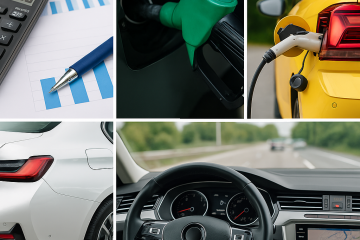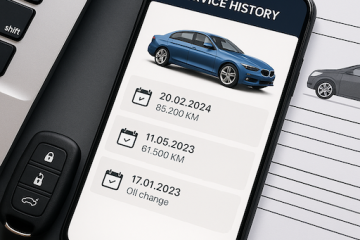Market Insight: To build, or not to build – and the questions you need to answer

Whether you’re looking to breathe life into EV sales, improve business processes or boost marketing performance, how can automotive technology help you? One Auto API CEO Mark Fretwell looks at the current market and puts some meat on the bones…
It’s been another busy month at One Auto API.
Firstly, our API platform is seeing an ever increasing number of data transactions.
These transactions are typically driven by activity in the showroom with dealers running history checks, valuing part exchanges, or buying teams valuing and pricing new stock.
This level of activity is great news for us in terms of utilisation of the platform and endorsement of the value of data we have available, but it is often a useful indicator of market conditions.
Quite simply when everyone is using more data, you know the market is in rude health.
Interestingly, this indicator has been backed up by comments we are hearing anecdotally from the trade as well as the most recent figures from Auto Trader who have reported that the used car market recorded robust levels of demand, speed of sale, and transactions in May – equating to a 6% increase year-on-year.
So, despite ongoing pressure on household budgets, it would appear that news of falling inflation and the economy seeing the fastest growth in two years may be helping to boost buyer confidence and fuel increased demand.
But not demand across the board.
Continuing a theme from last month (and earlier), EVs are still not sparking the imagination of retail buyers like many would hope. Recent figures from Motors show that the average advertised prices of used EVs hit a new low of £27,241, down 3% month-on-month and 10% year-on-year.
From a new car perspective, the SMMT confirmed earlier in May that car makers are currently on track to miss the terms of the government’s controversial ZEV mandate this year. SMMT figures predict the BEV new car market share will be 19.8% by the end of 2024 – falling short of the required 22%.
With potential fines of £15,000 for every non-electric car they miss their target by, manufacturers will be thinking carefully about their options and what more they can do, alongside current incentives, offers and education drives, to get closer to the targets.
So what can dealers do to boost sales of EVs?
I had an interesting experience earlier this month when my car went in for a service. It’s an ICE vehicle and needed to be left in the dealership for a few days for work to be undertaken. I was offered an EV as a courtesy car.
It was a high-spec, premium EV yet there was obvious hesitancy from the dealer team about whether I would be happy to accept it and it came with the offer of an alternative ICE vehicle should I have any long journeys planned. I didn’t, and the vehicle came fully charged – so there was no hesitancy on my part in accepting an EV for 48 hours but the dealer was sowing some seeds of doubt.
The car was excellent.
I was able to complete the journeys I had planned in comfort and without a hitch, although I could clearly see the impact on available range on the motorway – reinforcing how much influence weather and driving conditions can have compared to conventional ICE vehicles and the importance of setting real-world range expectations for prospective EV owners.
Then, when I handed the keys back, my EV journey finished.
Which surprised me a little.
Given the taster I’d had, the dealership’s knowledge of my current vehicle and the need for EV sales, I had anticipated some form of follow up or conversation about the possibility of me transitioning to a new EV.
But the sales pitch, when it came, was all about trading into a newer version of my current ICE vehicle – there was no discussion about an EV whatsoever.
As it happens, I’m not in the market for a new car right now, but the dealership doesn’t know that. How many opportunities are being missed by not having the right conversation or an effective retention process that allows the customer to explore different choices?
Perhaps the lack of qualification is a reflection of the time pressures that dealer teams face – but I found myself reflecting that much of the heavy lifting could have been done with technology, and would have delivered a far better experience for me as a customer.
It may be that there is an excellent deal available on the EV I enjoyed driving but it wasn’t being handed to me on a plate.
This underlines a growing role for tech solutions that can increase sales efficiency and improve customer experience, liberating sales staff to focus on adding value rather than trying to drive every aspect of the process manually.
At One Auto API, we talk to customers about 20 to 30 new tech projects each month. These range from straightforward websites to complex enterprise solutions, with customers ranging from bootstrapped startups to multinationals.
As automotive companies seek to enhance their digital capabilities, critical decisions arise – and one that comes up time and again is whether to develop your own software solution or licence an existing product.
This isn’t always an easy question to answer and there are several factors that should feed into your decision-making process, with the decision hinging on a detailed understanding of your business requirements and the solutions on offer from third parties.
Does the solution you need exist already?
Don’t expect a binary answer to this question.
While there will inevitably be a range of products in the market, the extent to which you will need to customise the solution (or your process) needs to be taken into account, and weighed against the cost of building a solution tailored to your exact requirements.
Creating bespoke software is a significant investment.
Initial expenses include recruiting developers, designers, and project managers, and then once the development is complete you need to factor in ongoing maintenance overheads.
Building your own software can be a source of unique competitive advantage, and offers complete control over functionality, design, and integration with existing systems.
However, it also requires sustained investment over a period of time and if the solution you need already exists, you need to ask whether it will be cheaper to buy or build over the expected life of the solution in your business.
How quickly do you need it?
Pre-built solutions can be implemented relatively quickly, enabling businesses to address their software needs at pace.
Building software from scratch, on the other hand, takes time – and usually longer than you think. Effective development processes involve planning, designing, coding, testing, and deployment. For businesses needing immediate solutions, this can be impractical.
Who will build it?
If you do decide to build a solution from scratch, you’ll need to decide who is going to do the coding.
If software is core to your business then an in-house team is a good option, or you can choose a development partner to deliver the solution for you.
Recruiting a team with the right technical skills is a given but, as anyone who has tackled a mountain climb will tell you, an experienced guide can make all of the difference to your chances of success – fewer wrong turns will improve your speed to market and reduce your costs.
Successful tech partners, like One Auto API, go the extra mile to offer comprehensive support and guidance and will help you navigate any potential pitfalls on your automotive software development journey.
So, which route will you take?
Ultimately, the decision to build or buy hinges on a detailed understanding of your business requirements and a thorough assessment of the solutions available in the market.
By carefully weighing up all the factors, you can make an informed choice that fuels growth.
Here to help – let’s talk.
If you have any questions about how you can use data to position your business for future success, we are here for you. Click here to schedule a free 30-minute consultation – we will use the time to understand your business, project and goals to see how we can add value.


